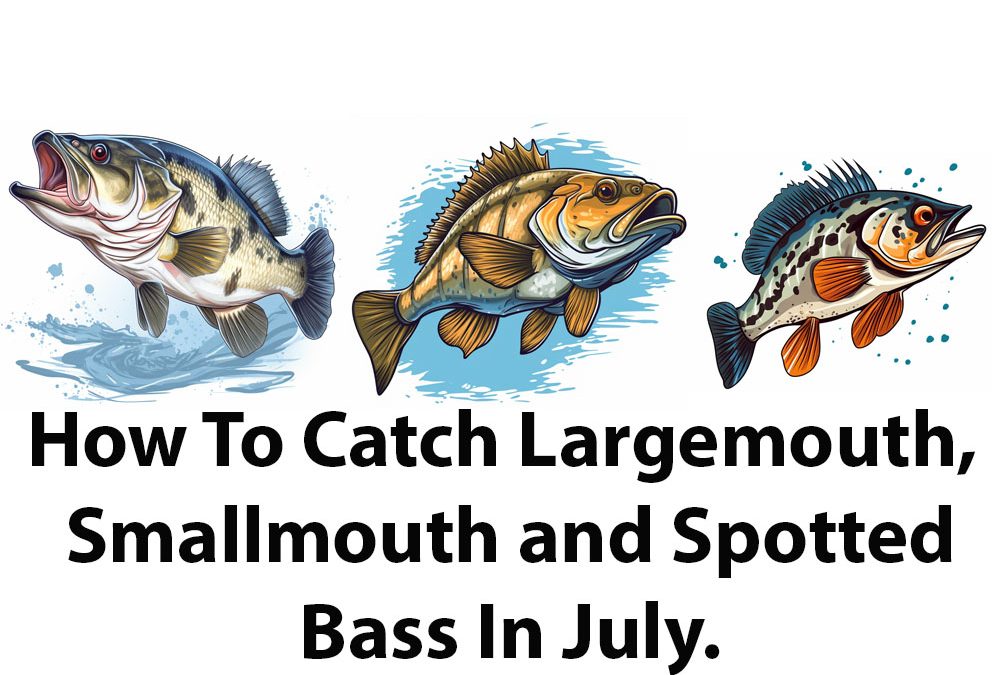Few things are more enjoyable for an experienced angler than hooking a bass. There’s nothing quite like feeling that tug on the other end of the line, whether I’m hauling in a tenacious largemouth, a resilient smallmouth, or a stealthy spotted bass. Even though bass fishing may be a thrilling activity throughout the year, July is a particularly successful month for pursuing these prized game fish.
I’m going to provide my best advice and methods for capturing largemouth, smallmouth, and spotted bass in July in this article. Remember that knowledge and perseverance are both necessary for success in the world of fishing, so don’t give up if you don’t do it right the first time. But you too can master the art of catching bass with a little perseverance and practice.
Largemouth Bass
Let’s start with the big boys (and girls): largemouth bass. When people discuss “bass fishing” in general, they usually refer to these species. They can be found in a variety of settings, from ponds and lakes to slow-moving rivers, and are the most prevalent species in the majority of the US.
Preferred Habitat for Largemouth Bass in July
Largemouth bass can be found in a number of settings in July. When pursuing these fish, water temperature is among the most crucial considerations. Since largemouth bass typically prefer water temperatures between 65 and 80 degrees Fahrenheit, they are more likely to be found there in July than they would be earlier in the year.
Some of the best places to find largemouth bass in July include:
- Deep weed beds: As the water warms up, largemouth bass will often seek out cooler water, which can often be found in deeper weed beds. Look for areas with plenty of vegetation and cast your lure or bait towards the edges of the bed, where fish are likely to be waiting to ambush prey.
- Drop-offs and ledges: Similarly, largemouth bass will often be found near underwater drop-offs or ledges in July. These areas can provide cool and conducive environments for the fish, and can often be found by searching maps of the body of water you’re fishing in.
- Channels and creeks: When the water warms up in the summer, largemouth will often move to deeper channels and creeks. These areas can provide both cooler water and a steady supply of prey, as well as cover that the fish can use to shelter themselves from the sun.
Best Techniques for Catching Largemouth Bass
It’s time to discuss how to catch largemouth bass now that you are aware of where to look for them in July. When pursuing these fish, there are a few tried-and-true methods that are especially successful, such as:
- Flipping and pitching: Flipping and pitching are both techniques that involve casting your lure or bait into an area with cover (such as a weed bed or under a dock) and then using a short, quick motion to reel it back in. This can be an effective way to get largemouth bass to strike, as they’ll often be hiding under these areas waiting to ambush prey.
- Topwater fishing: In the early morning and late evening, largemouth bass will often be feeding near the surface. Topwater lures such as poppers or buzzbaits can be a great way to target these fish during these times, as they mimic the movements of surface prey.
- Jerkbait fishing: Jerkbaits are lures that are designed to mimic the movements of injured or struggling prey. These can be particularly effective when fished near drop-offs or ledges, as they’ll often tempt largemouth bass into striking.
Lures and Baits that Work Well for Largemouth Bass
Of course, the best techniques in the world won’t do you any good if you’re not using the right lures and baits. Some of the most effective options for catching largemouth bass in July include:
- Plastic worms: Soft plastic worms are one of the most popular and effective baits for largemouth bass fishing. They come in a variety of colors, sizes, and shapes, and can be rigged in a variety of different ways to suit your fishing conditions.
- Spinnerbaits: Spinnerbaits are lures that consist of a metal blade that spins as you reel it in, along with a skirt and one or more hooks. They’re particularly effective for fishing near weed beds or cover, as the blade can attract the attention of fish and also help to keep the lure from getting stuck.
- Crankbaits: Crankbaits are lures that are designed to mimic the movements of baitfish or other prey species. They come in a variety of shapes, sizes, and colors, and can be fished near drop-offs or ledges to entice largemouth bass into striking.
Smallmouth Bass
Smallmouth bass are a close second to largemouth bass in terms of popularity when it comes to bass fishing. These fish are widespread in the same bodies of water as largemouth bass and are renowned for their tenacious battling skills.
Preferred Habitat for Smallmouth Bass in July
In July, smallmouth bass can be found in many of the same types of habitats as largemouth. However, there are a few differences to keep in mind when targeting smallies. For one, these fish tend to prefer cooler water than largemouth, so they’re likely to be found in deeper areas even in relatively small streams and rivers.
Some of the best places to find smallmouth bass in July include:
- Rocky areas: Smallmouth bass tend to prefer rocky habitats, as these areas can provide both cooler water and a steady supply of prey. Look for areas with plenty of rocks and boulders, and try casting your lure towards the edges of these areas where fish are likely to be hiding.
- Deep pools and eddies: As with largemouth bass, smallmouth will often seek out cooler water in the summer. Deep pools and eddies can provide these conditions, as well as cover where fish can hide from the sun and prey on passing food.
- Fast-moving water: Smallmouth bass are known for their love of fast-moving water, and in the summer, they’ll often be found in areas with strong currents. Look for areas where fast water meets slow water, as these are often prime spots for smallmouth to wait for prey to come by.
Best Techniques for Catching Smallmouth Bass
There are a few different techniques that work
particularly well when targeting smallmouth bass in July. Some of these techniques include:
- Drift fishing: Drift fishing involves floating downstream with the current while casting your lure or bait towards likely fish-holding spots. This can be particularly effective for smallmouth bass, as they’ll often be found in areas with fast-moving water where food is plentiful.
- Jig fishing: Jig fishing is a technique that involves bouncing a weighted jig along the bottom of the body of water you’re fishing in. This can be effective for smallmouth bass, as they’ll often be found near the bottom of the water column.
- Topwater fishing: As with largemouth bass, smallmouth bass will often feed near the surface in the early morning and late evening. Topwater lures such as poppers or buzzbaits can be a great way to target these fish during these times.
Lures and Baits that Work Well for Smallmouth Bass
When it comes to smallmouth bass, there are a few different lures and baits that tend to work well. Some of the most effective options include:
- Tube baits: Tube baits are soft plastic baits that are designed to mimic the movements of crayfish. They can be fished on a jighead or Texas rigged, and are particularly effective in rocky areas where smallmouth bass tend to congregate.
- Crankbaits: Crankbaits are lures that are designed to mimic the movements of baitfish or other prey species. They can be effective for smallmouth bass, particularly when fished near drop-offs or ledges.
- Spinnerbaits: Spinnerbaits can be effective for smallmouth bass, particularly when fishing in areas with cover or near the edges of weed beds.
Spotted Bass
Let’s talk about spotted bass lastly. Anglers frequently neglect these fish in favor of their larger cousins, despite the fact that they may be equally enjoyable to catch and can put up a strong fight.
Preferred Habitat for Spotted Bass in July
In July, spotted bass can be found in a variety of habitats, but they tend to prefer deeper water than largemouth or smallmouth bass. Some of the best places to find spotted bass in July include:
- Deep points and ledges: Spotted bass will often be found near points or ledges that drop off into deeper water. These can be good places to target with a jig or other bottom-bouncing lure.
- Docks and other cover: Spotted bass will often hide under docks or other types of cover in the summer. Look for areas with plenty of cover and cast your lure or bait towards the edges of these areas.
- Rocky areas with current: Spotted bass are often found in areas with rocky bottoms and strong currents. Look for areas where fast water meets slow water, as these are often prime spots for spotted bass.
Best Techniques for Catching Spotted Bass
When it comes to catching spotted bass, there are a few different techniques that tend to work well. Some of these techniques include:
- Drop shotting: Drop shotting is a technique that involves using a weight to hold your bait or lure near the bottom of the water column. This can be particularly effective for spotted bass, as they tend to prefer deeper water.
- Crankbait fishing: Crankbaits can be effective for catching spotted bass, particularly when fishing near rocky areas or areas with current.
- Jig fishing: Jigs are a versatile lure that can be effective for catching spotted bass in a variety of different habitats.
Lures and Baits that Work Well for Spotted Bass
There are a few different lures and baits that tend to work well for catching spotted bass in July. Some of the most effective options include:
- Soft plastic baits: Soft plastic baits such as worms or lizards can be effective for catching spotted bass in areas with cover.
- Crankbaits: Crankbaits can be effective for catching spotted bass, particularly when fishing near rocky areas or areas with current.
- Jigs: Jigs are a versatile lure that can be effective for catching spotted bass in a variety of different habitats.
Conclusion
Catching largemouth, smallmouth, and spotted bass in July requires a combination of knowledge, patience, and skill. By understanding the preferred habitats and behaviors of these fish, as well as the most effective techniques and lures, you can increase your chances of success on the water. So get out there and give it a try – who knows, you might just hook into your personal best bass!
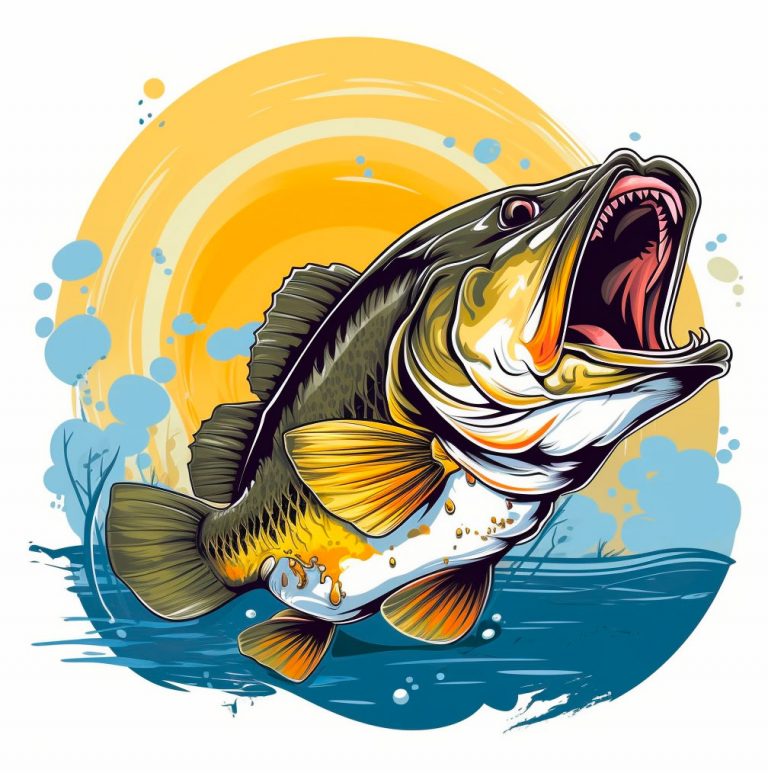
Catch Bass In 90 Degree Water
Introduction: Catching bass in 90 degree water can seem like a daunting task. Fishing in hot water temperatures can be extremely challenging, and it is important to have the right techniques and strategies in place to make sure you catch that prized bass. For a complete look at summer bass fishing In this article, we […]
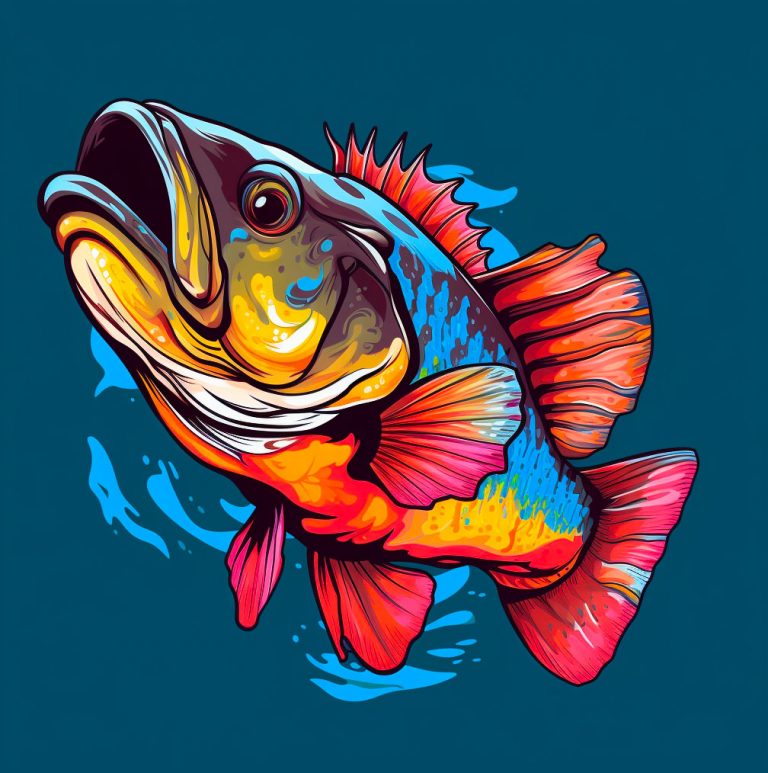
Best Lure Colors For Summer Bass
Summer is a great time for fishing, and it is a crucial time of the year to choose the correct lures for catching bass. Catching bass in summer can be a bit challenging as they tend to avoid the heat of the day and become more inactive. However, selecting the best lure colors can make […]
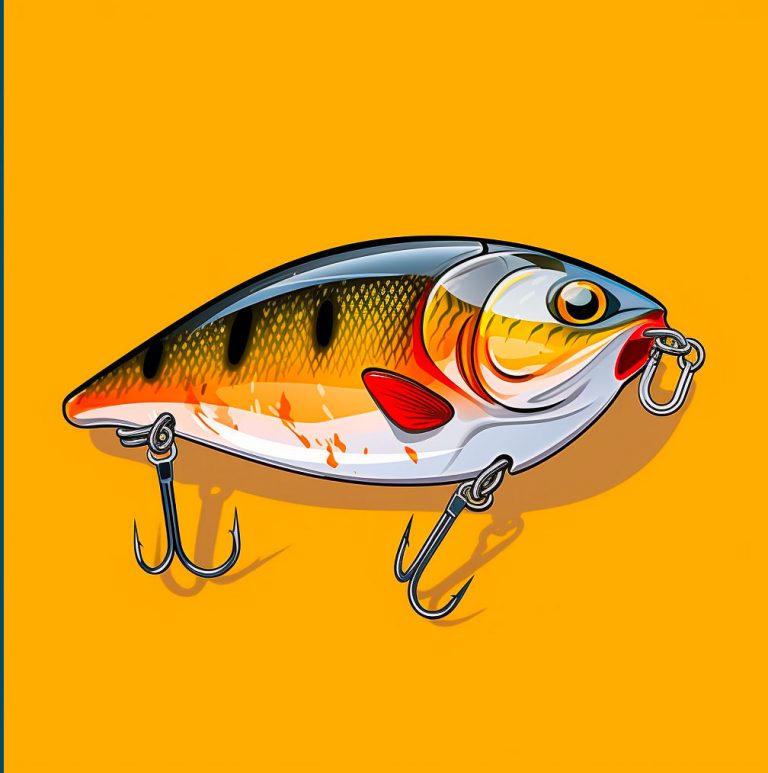
The Best Crankbait For Summer Bass
Introduction Crankbaits are one of the most popular lures in bass fishing, as they are versatile and can be used in a variety of fishing environments. However, choosing the right crankbait is crucial for successful fishing in the summer months when bass behavior changes and water temperature increases. In this article, we’ll cover the factors […]
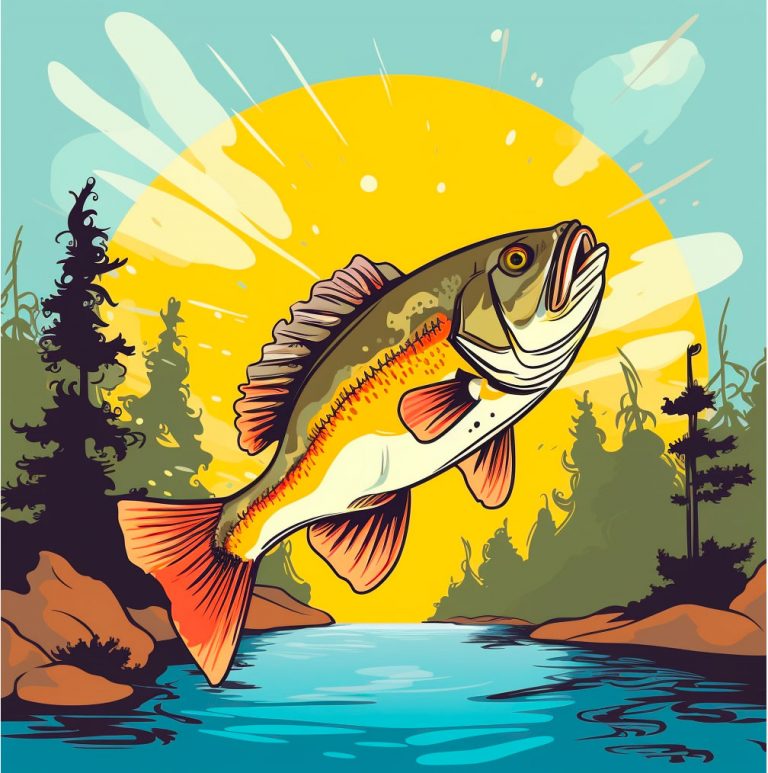
Summer Bass Fishing: Find Bass Fast
Introduction: Summer is a great time to hit the water for some bass fishing. As the water temperatures rise, the bass become more active and their feeding patterns change. However as you enter the dog days of summer the fish can all but seem to disappear at certain times. We’re going to show you how […]
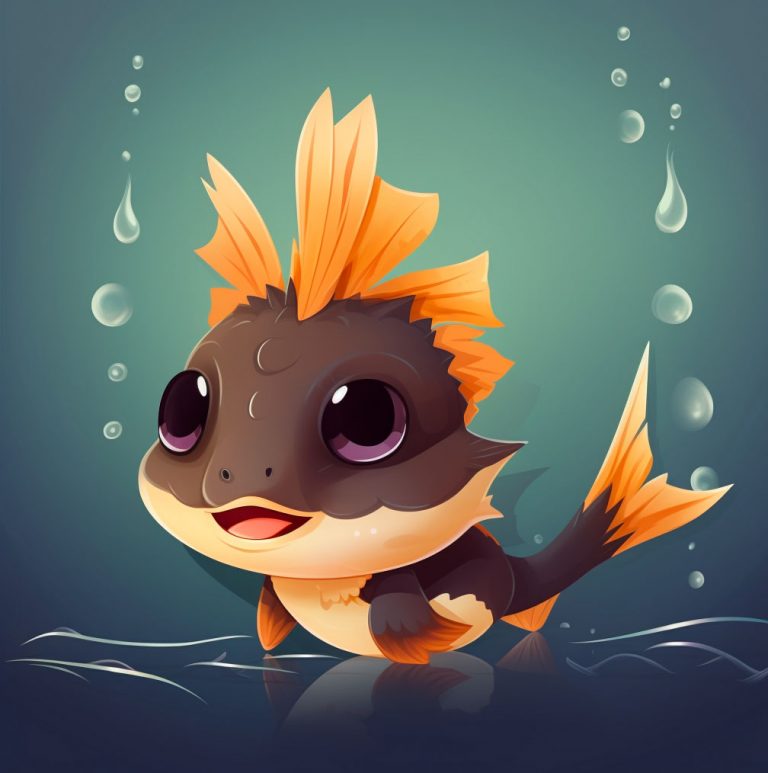
How To Catch Bass During The Catfish Spawn
I love to fish for bass and am constantly seeking for innovative and fun ways to capture fish. Targeting bass during the catfish spawn is one strategy I have discovered to be especially successful. Fishing during this season might be challenging, but with the correct techniques and equipment, you can catch a lot of good […]
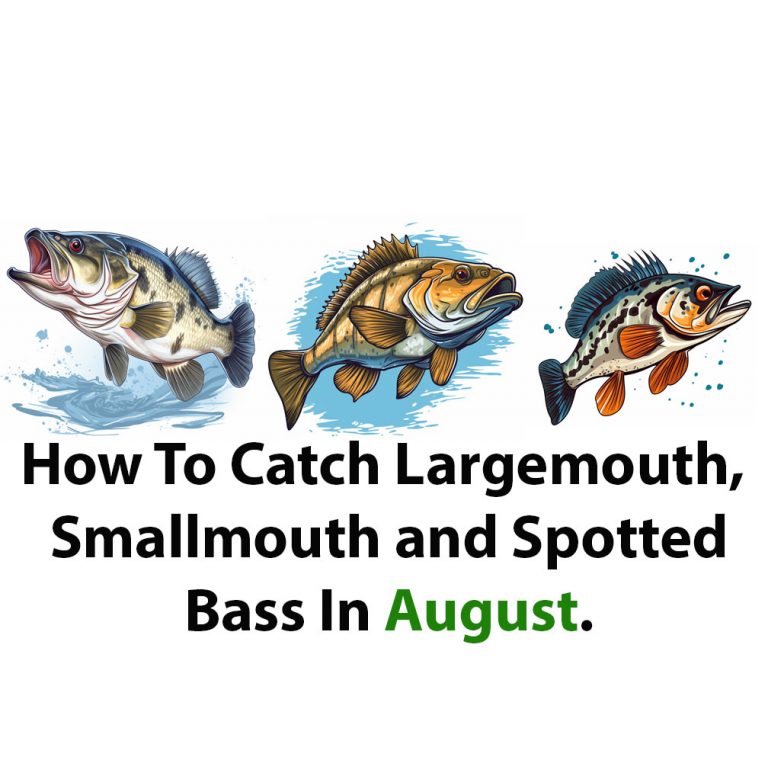
How To Catch Bass In August
Introduction I get a kick every time I step into the water since I’m an experienced bass fisherman. And as August approaches, that sensation only intensifies. The water is warm, the temperatures are high, but most importantly, the fish are biting. But as any angler is aware, casting a line and waiting for a pull […]

